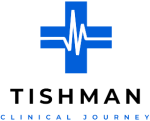Clinical trials are conducted in a series of phases, each with distinct objectives and procedures. Understanding these phases helps participants and stakeholders grasp how new treatments are tested and validated before becoming widely available. Here’s a breakdown of the different phases of clinical trials and their significance in the research process.
1. Phase 1: Safety and Dosage
The first phase of clinical trials focuses on assessing the safety of a new treatment or intervention. A small group of participants, typically 20 to 100 healthy volunteers or individuals with the condition, is involved in this phase. Researchers aim to determine the treatment’s safety, establish a safe dosage range, and identify any potential side effects. This phase is crucial for ensuring that the new intervention does not pose significant risks to participants.
2. Phase 2: Efficacy and Side Effects
In Phase 2, the focus shifts to evaluating the effectiveness of the treatment. A larger group of participants, usually 100 to 300, who have the condition being studied, is involved. This phase assesses how well the treatment works in managing or curing the condition and continues to monitor safety. Researchers also collect data on the treatment’s optimal dosage and potential side effects, helping to refine the intervention and prepare for larger-scale testing.
3. Phase 3: Confirmation and Comparison
Phase 3 trials are designed to confirm the treatment’s effectiveness and compare it to existing standard treatments. This phase involves a larger group of participants, often ranging from 1,000 to 3,000 or more. Researchers evaluate the treatment’s overall benefit-risk profile and gather comprehensive data on its efficacy and safety in a broader population. This phase provides critical information that helps regulatory agencies decide whether to approve the treatment for general use.
4. Phase 4: Post-Marketing Surveillance
After a treatment is approved and available to the public, Phase 4 trials, also known as post-marketing studies, continue to monitor its long-term effectiveness and safety. This phase involves ongoing data collection and analysis to detect any rare or long-term side effects that may not have been identified in earlier phases. Phase 4 trials help ensure that the treatment remains safe and effective once it is widely used and can lead to adjustments in its recommended use or labeling.
Understanding these phases provides insight into the rigorous process that new treatments undergo before they are made available to the public. Each phase is designed to ensure that only the safest and most effective interventions are introduced to the market. At Tishman Clinical Journey, we are committed to conducting thorough and ethical clinical trials to advance medical research and improve patient outcomes.

